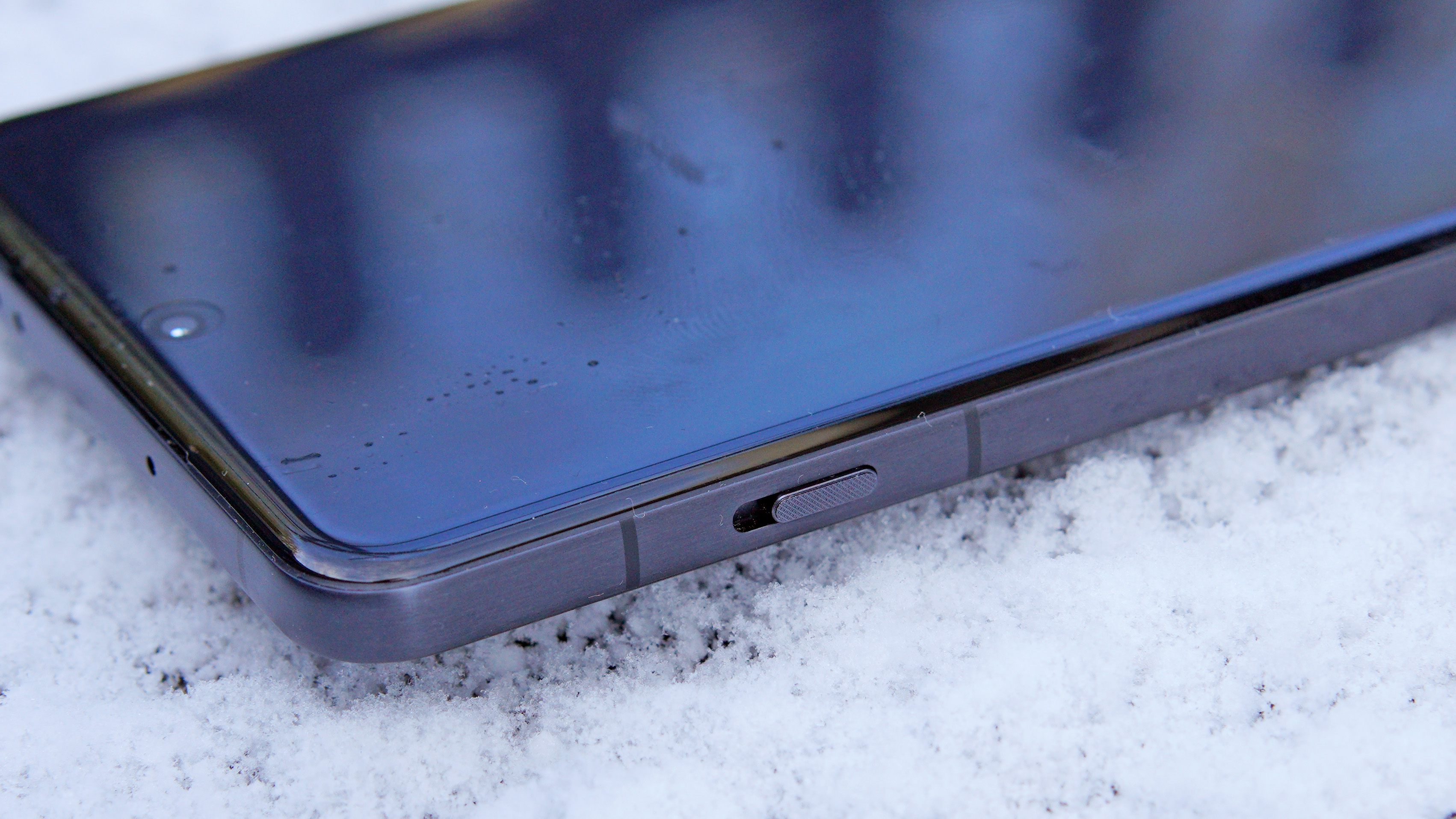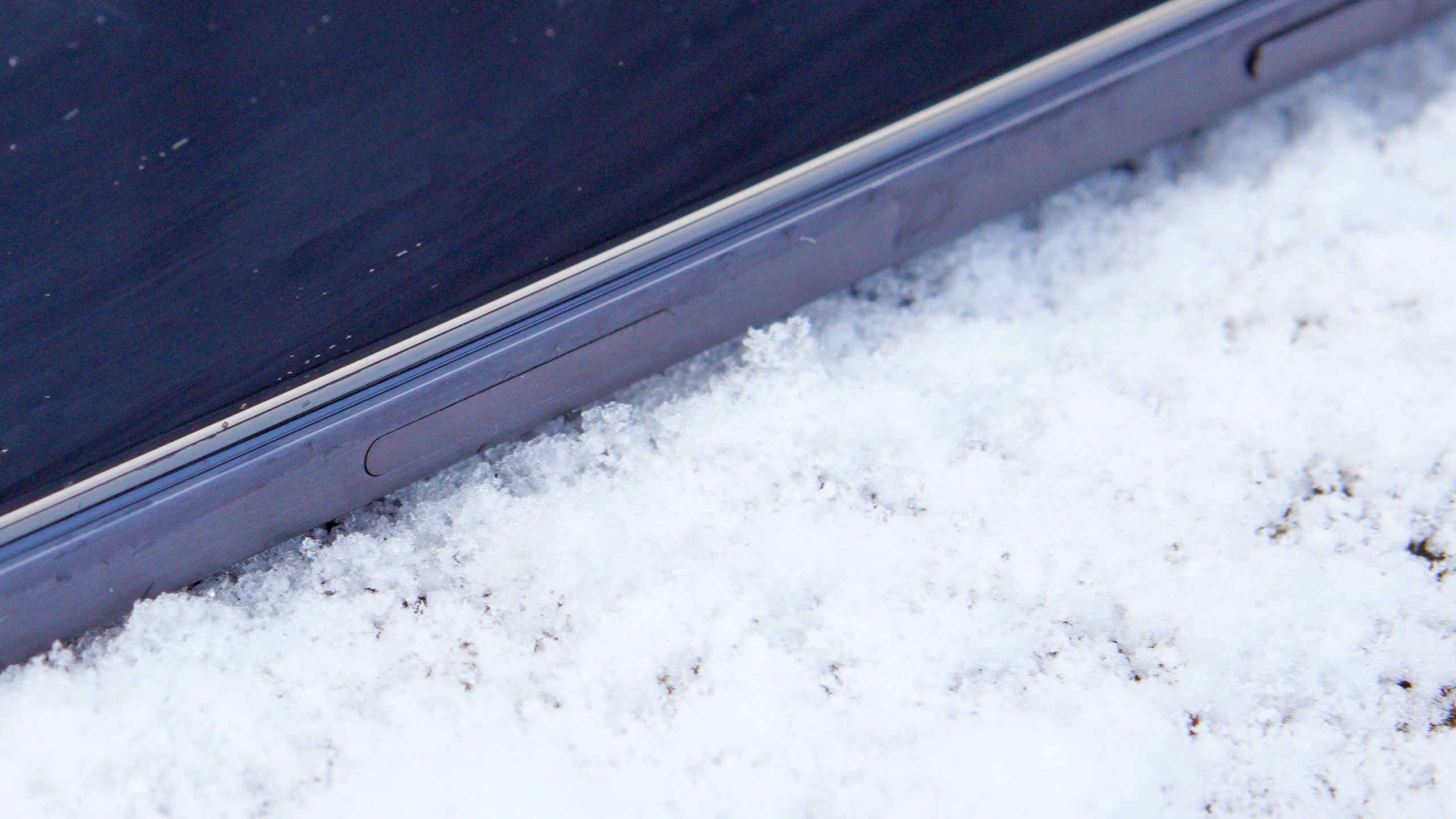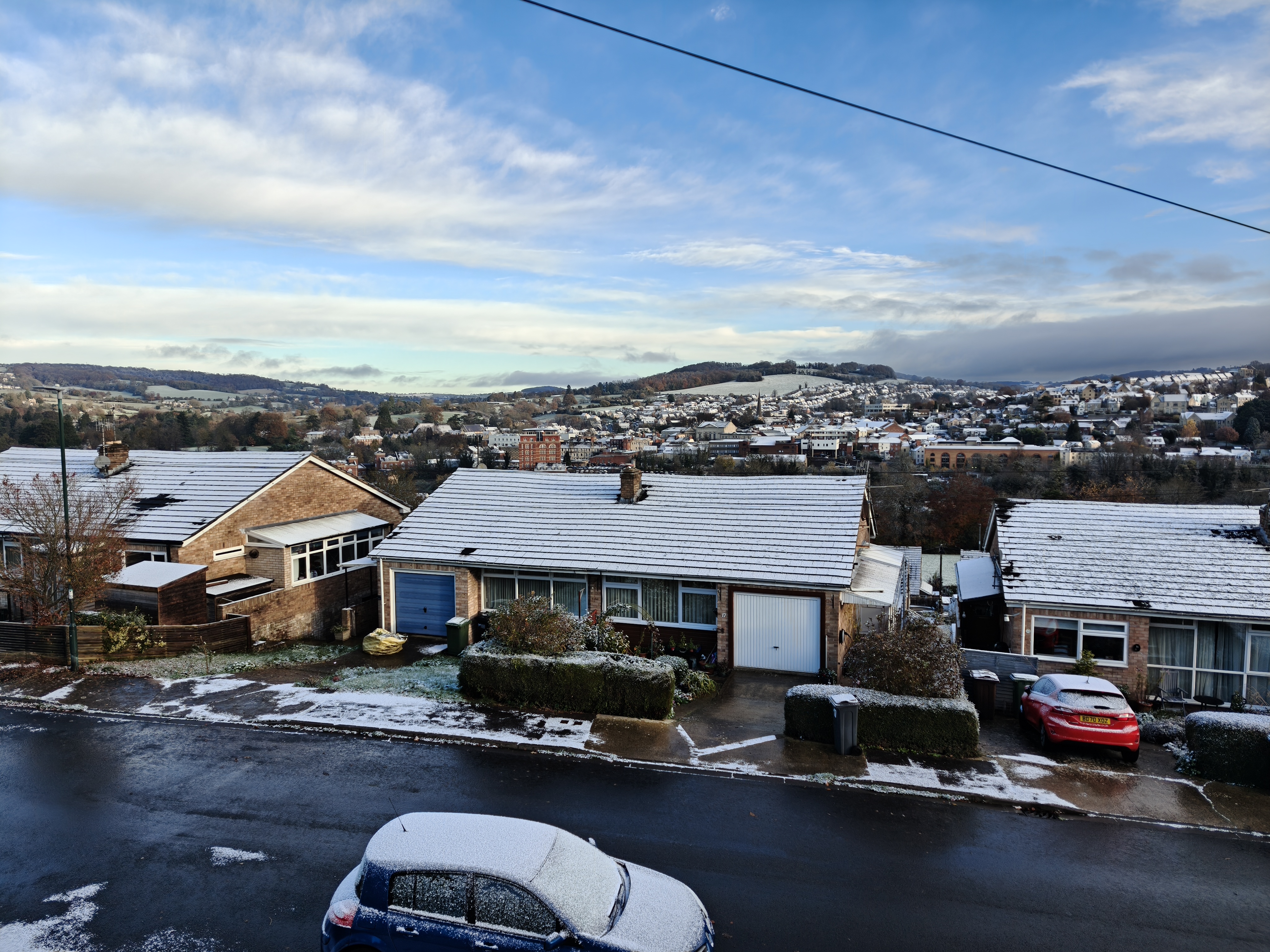Digital Camera World Verdict
The Oppo Find X8 Pro is an exceptionally versatile and capable camera phone. Sports, wildlife, portraiture, close-ups; you can capture it. Heck, with its IP69 ingress protection, it's even suitable for underwater photography. Sure, the sensor used in its primary camera could be larger, but the incredibly powerful image processing essentially negates any sensor size deficiency. There are other camera phones that'll give you more vivid and contrasty images, but Oppo is going for a more realistic aesthetic when it comes to colour and contrast, and that's fine by us.
Pros
- +
Incredible camera performance
- +
Powerful chipset
- +
Great battery life
- +
Competitive pricing
Cons
- -
Weaker than Find X7 Ultra in some areas
- -
Smash-prone glass back panel
Why you can trust Digital Camera World
The Find X8 Pro is Oppo's latest flagship camera phone, or at least it is outside China. Oppo's previous flagship handset - the Find X7 Ultra - was a China exclusive, and in some ways it still has the edge over the newer X8 Pro. Both phones share a quad-camera array with dual periscope telephoto cameras, but where the X7 Ultra packs a 1-inch-type Sony Lytia LYT900 sensor for its primary camera, the Find X8 Pro gets a smaller 1/1.4" Lytia LYT808 sensor, though as with the X7 Ultra, all four modules are 50MP in resolution.
Where the X8 Pro edges ahead of the X7 series is its implementation of AI and super-fast image processing, courtesy of its powerful new AI-enabled MediaTek Dimensity 9400 chipset. This enables features like ultra-fast burst shooting and AI-enhanced zoom at up to 120x.
The Find X8 Pro continues Oppo's longstanding partnership with Hasselblad, with its image processing developed in conjunction with the iconic Swedish camera manufacturer.
Elsewhere, the Find X8 Pro looks the part thanks to its super-slim bezels and attractive glass back, while the 6.78-inch AMOLED screen is capable of high-brightness HDR, 2160Hz PWM Dimming and it's Dolby Vision certified.
On paper at least, the Oppo Find X8 Pro has the makings of a no-compromise flagship camera phone. It still leaves scope for an X8 Ultra, which would likely receive a larger sensor for its primary camera, but history suggests a future Ultra variant may not receive a global launch. Let's see if the X8 Pro is already good enough for that not to matter...
Oppo Find X8 Pro: Design and Screen
The Find X8 Pro comes in two colour options: Space Black, and Pearl White. I found my black review sample to be a relatively uninspiring colourway - the Pearl White version, at least in the press images, looks like the more eye-catching finish. But the main point of interest on the back of the Find X8 Pro is that large circular camera island, prominently showcasing the Hasselblad logo in its centre. The thickness of the island (Oppo call it the "Cosmos Ring") is now 40% slimmer, at 3.58mm, compared to the X8 Pro's "predecessor", though it's not clear exactly which phone Oppo is referring to. Even with this supposed thickness reduction, the X8 Pro's camera bump is still quite pronounced, at least when compared with the rest of the slimline body. Unlike the X7 Ultra, the X8 Pro's four camera modules are arranged symmetrically within the camera island, for a more visually pleasing look.
Oppo claims the Find X8 Pro is "built to last", courtesy of Oppo's Armour Shield construction that utilizes reinforced glass and hardy aluminium to absorb shock. The phone is also IP68/IP69 rated, so it should be water resistant to a depth of 1.5m for up to 30 minutes and is even resistant to water jets. Sounds great, but I've got reason to doubt the phone's drop-resistance. During my testing I accidently dropped the phone from a height of only around 1.5 feet / 45cm, onto a tiled floor. But even that was enough to shatter the phone's back glass, making a mockery of the so-called 'Armour Shield' construction. It'd be unfair to single-out Oppo here though, as it's far from the only phone manufacturer to favour glass back panels for its premium phones. This is an industry-wide trend, but one that's staggeringly impractical for a go-anywhere device like a camera phone, especially when combined with wafer-thin phone edges and super-slippery matte back panel finishes that make drops even more likely.
The best camera deals, reviews, product advice, and unmissable photography news, direct to your inbox!
At 8.24mm thick and weighing 215g, the Find X8 Pro does its best to minimise its large 6.78-inch screen size, though this is nonetheless a sizeable handset. The display curves down at all four edges, keeping bezel thickness down to 1.9mm and contributing to a "softer in-hand feel", as well as making the phone more slippery(!). The display quality is superb though, featuring a smooth 1-120Hz adaptive refresh rate, up to 4500-nit localized brightness in HDR mode and 1600 nits in high-brightness mode. Impressive numbers, but I didn't find the maximum brightness to be quite as awesome as the figures suggest. The screen is however bright enough to be viewable under direct sunlight. The 1264 x 2780 resolution falls short of the 1440 x 3168 screen res of the preceding Find X7 Ultra, but the X8 Pro's 450 PPI pixel density is still easily crisp enough to hide individual pixels from the human eye. The overall viewing experience from the Find X8 Pro is superb, with high contrast, rich, vibrant colours, while the curved edges don't noticeably alter colour or contrast at the perimeter of the screen.
On the left edge of the handset is the Alert Slider - a three position switch that lets you directly switch between ring, vibrate and silent. It's a nice touch that harks back to the old iPhone mute switch, and is a lot easier than waking the phone and using the OS to make the same adjustment. On the right edge of the phone is the usual volume up/down button, power button, and the Quick Button. This touch sensitive haptic button can be used as a physical camera shutter if you tap it, and by sliding left or right it can also control the camera's zoom. A double tap will launch the camera app, in a claimed 0.4 seconds.




Oppo Find X8 Pro: Camera Specs
The Find X8 Pro features four rear-facing camera modules, consisting of:
• 15mm ultra-wide (50MP, Samsung ISOCELL JN5 1/2.75", f/2.0)
• 23mm wide (50MP, Sony Lytia LYT808 1/1.4", f/1.6, OIS)
• 73mm periscope telephoto (50MP, Sony Lytia LYT600 1/1.95", f/2.6, OIS)
• 135mm periscope telephoto (50MP, Sony IMX858 1/2.51", f/4.3, OIS)
All four cameras benefit from Oppo's HyperTone Image Engine. Developed in conjunction with Hasselblad, the core objective is to enhance your images while still preserving natural skin tones and the original ambience of each shot. Oppo claims the system also performs the usual image enhancements like increasing dynamic range and reducing image noise in low light shots. This is achieved by merging up to nine RAW images into a single photo.
The Find X8 packs in not one but two periscope telephoto modules. A periscope lens uses a prism to reflect light through 90 degrees and down a stack of lens elements positioned side-to-side within the phone body, rather than the usual front-to-back. This means you can have a long lens without increasing the thickness of the phone itself. The 73mm telephoto camera is particularly special as it features two prisms, so light is angled through 180 degrees. This innovative lens design was developed primarily to reduce the overall size of the telephoto module, as conventional, single-prism periscope lenses take up a lot of precious space within a phone's tightly-packed chassis.
As with many phones incorporating camera modules of varying focal lengths, zoom can be switched directly between the four separate focal lengths, or controlled seamlessly from 15mm through to 135mm. The common 50MP resolution across all four modules helps hide perceivable image quality differences between the different sensors. But 135mm / 6x zoom is far from the limit of the Find X8 Pro's zoom capability. The phone's zoom slider can be cranked all the way to a seemingly ridiculous 120x, courtesy of Oppo's AI Telescope Zoom feature. This harnesses the AI and computational processing power of the Dimensity 9400 chipset to augment the pixel-level detail with AI-generated imagery.
Another benefit of the powerful chipset is the camera's burst shooting speed. Lightning Snap offers 7fps continuous shooting, simply by holding down the shutter button. Image quality isn't compromised during burst shooting, as the X8 Pro still applies its HyperTone Image Engine processing to each frame to minimise motion blur and increase overall clarity. Oppo is also claiming zero shutter lag (the delay between pressing the shutter button and a photo actually being captured) on all four rear-facing cameras
Oppo Find X8 Pro: Camera Review
AI is now a tediously overused buzz word seemingly applied to almost everything containing a microchip. You might think its use in the Find X8 Pro's camera processing is just another example of overzealous marketing, but that's not the case. AI is most evident in the phone's AI Telescope Zoom feature. The phone uses the longest 135mm telephoto lens combined with in-sensor cropping to zoom in as far as around 10-20x zoom, but beyond this there's simply so little pixel-level image information left that photos would be a mess without AI assistance. At around 20x zoom and beyond, AI analyses the otherwise soft, pixelated images and transforms them into a sharp shot, complete with crisp textures. Even text is detected and sharpened. This isn't just some crude sharpness boost that could be achieved in any old image editor: rather, the soft, highly magnified images are used more as a basis/guide for the AI to apply its own interpretation of the scene. The results are usually uncannily sharp, but shots captured at 60-120x can show evidence of AI trickery, with some obvious glitches and errors in textures and object edges. You'll also want to avoid using extreme zoom when capturing images of people. AI is able to fill in the digital gaps for blurry objects very effectively, but it struggles to enhance faces with any finesse. You end up with hideous results that look like the product of a plastic surgeon that swapped is scalpels for meat cleavers. However, stick to 30x zoom or less, and avoid taking portraits of people at a distance of 50+ meters, and this phone's zoom ability is simply incredible.

The gallery above shows the different focal lengths and zoom ratios, from ultrawide (0.6x), through wide (1x), 2x, 3x, 6x, 10x, 20x, 30x, 60x and 120x zoom.












The Find X8 Pro is also surprisingly good at capturing fast-moving action. I tested its 7fps burst shooting ability at a Champion's League football match (Oppo is an official sponsor of the UEFA Champion's League), where the phone had no problem capturing rapid-fire bursts throughout the 90-minute game. The results were almost always sharp, despite the fast-moving subjects and the shots often being captured at up to 15x zoom, proving the effectiveness of each module's image stabilisation.











In general shooting, images from the Find X8 Pro are well-judged, accurately exposed, and with faithful colour reproduction. This is what we'd expect from the Hasselblad-developed colour science, which favours accuracy over outright eye-popping punchiness. Some may find images from the Find X8 Pro a little restrained compared to the pumped-up colour and contrast from other phones - Samsung, for example - but that's up to your personal preference. All four rear-facing cameras capture excellent detail and a sharp across the entire image frame, chromatic aberration (colour fringing) is essentially non-existent, and Oppo has done a good job matching the image quality across all four cameras, despite their differing physical sensor sizes.




The Find X8 Pro also excels in low light conditions, with the primary (23mm) camera resolving excellent detail levels. The telephoto cameras can't quite match the stellar levels of low light detail offered by the 23mm module, but they're not far off. The weakest link in low light is the ultrawide snapper, which captures noticeably less detail than the 23mm module. Low light image noise is very well controlled across all camera modules, even at high ISOs, though push past ISO 2000 and noise reduction can start to make images look slightly over-smoothed.
Oppo Find X8 Pro: Additional Features
In terms of general use, I found the Dimensity 9400 chipset with its 16GB of memory handled everything I threw at it mostly without issue. The phone only displayed a 'low memory' warning once, after over an hour of frequent burst shooting during the aforementioned football match, whereby it reduced its continuous shooting speed from 7fps to around 2-3fps.
Battery life also proved to be excellent, easily handling a full day of heavy use, though we'd expect this from the reasonably high-capacity 5910mAh cell. This can be recharged by the included rapid charger at 80W (wired) via Oppo's SUPERVOOC charging tech. This isn't the fastest charge speed out there - it's slower than the Find X7 Ultra's 100W charge speed - but it should still be plenty fast enough for most users. Wireless charging is supported at an impressive 50W, and Mag Charge magnetic charging is also an option, providing the phone is used in a compatible case. You also get a dual Nano SIM tray, but there's no microSD expandability or 3.5mm headphone socket.
Oppo Find X8 Pro: Verdict
The Oppo Find X8 Pro is an exceptionally versatile and capable camera phone. Sports, wildlife, portraiture, close-ups; you can capture it. Heck, with its IP69 ingress protection, the Find X8 Pro is even suitable for underwater photography. Sure, the sensor used in its primary camera could be larger, but the incredibly powerful image processing essentially negates any sensor size deficiency.
This is most evident when capturing zoomed-in shots using the two periscope telephoto modules, where the phone's uncannily effective AI enables the Find X8 Pro to punch well above its low weight when it comes to telephoto image quality. As with any AI-enabled camera phone, these 'assisted' images are more of an interpretation of a scene than a faithful recording, and the algorithms sometimes make mistakes, but these are the compromise that must be made to have big zoom reach in such a slim camera phone. There are other camera phones that'll give you more vivid and contrasty images, but Oppo is going for a realistic aesthetic when it comes to colour and contrast, and that's fine by us.
With a launch price of £1049, the Find X8 Pro is certainly not a cheap phone, but it does still undercut equivalently-specced rivals like a 512GB Pixel 9 Pro XL, a 512GB Galaxy S24 Ultra, or a 512GB iPhone 16 Pro Max. Given that the Find X8 Pro's camera specs and performance will give any of these phones a run for their money, Oppo's entry is also good value. We highly recommend it.
Ben is the Imaging Labs manager, responsible for all the testing on Digital Camera World and across the entire photography portfolio at Future. Whether he's in the lab testing the sharpness of new lenses, the resolution of the latest image sensors, the zoom range of monster bridge cameras or even the latest camera phones, Ben is our go-to guy for technical insight. He's also the team's man-at-arms when it comes to camera bags, filters, memory cards, and all manner of camera accessories – his lab is a bit like the Batcave of photography! With years of experience trialling and testing kit, he's a human encyclopedia of benchmarks when it comes to recommending the best buys.







